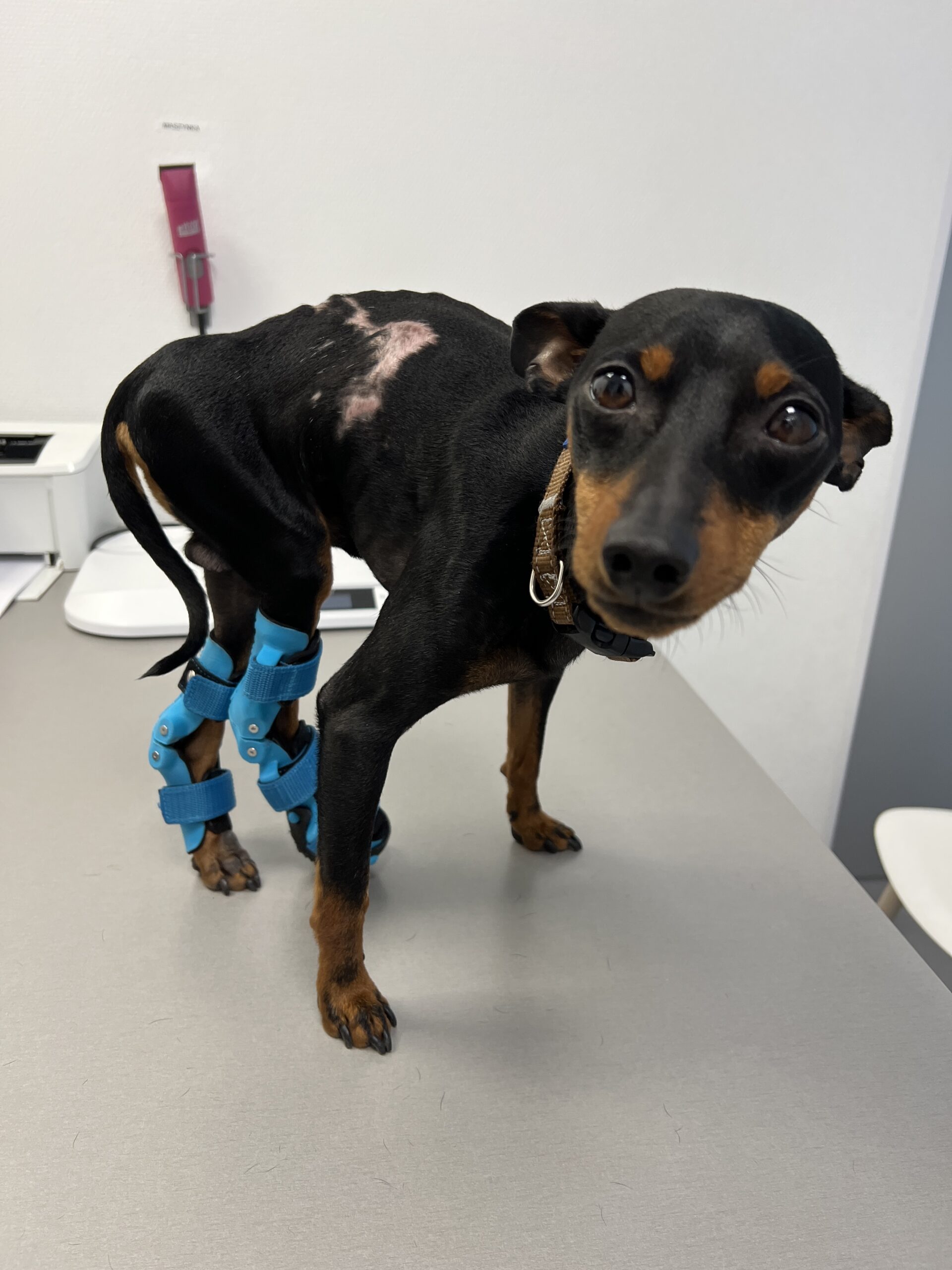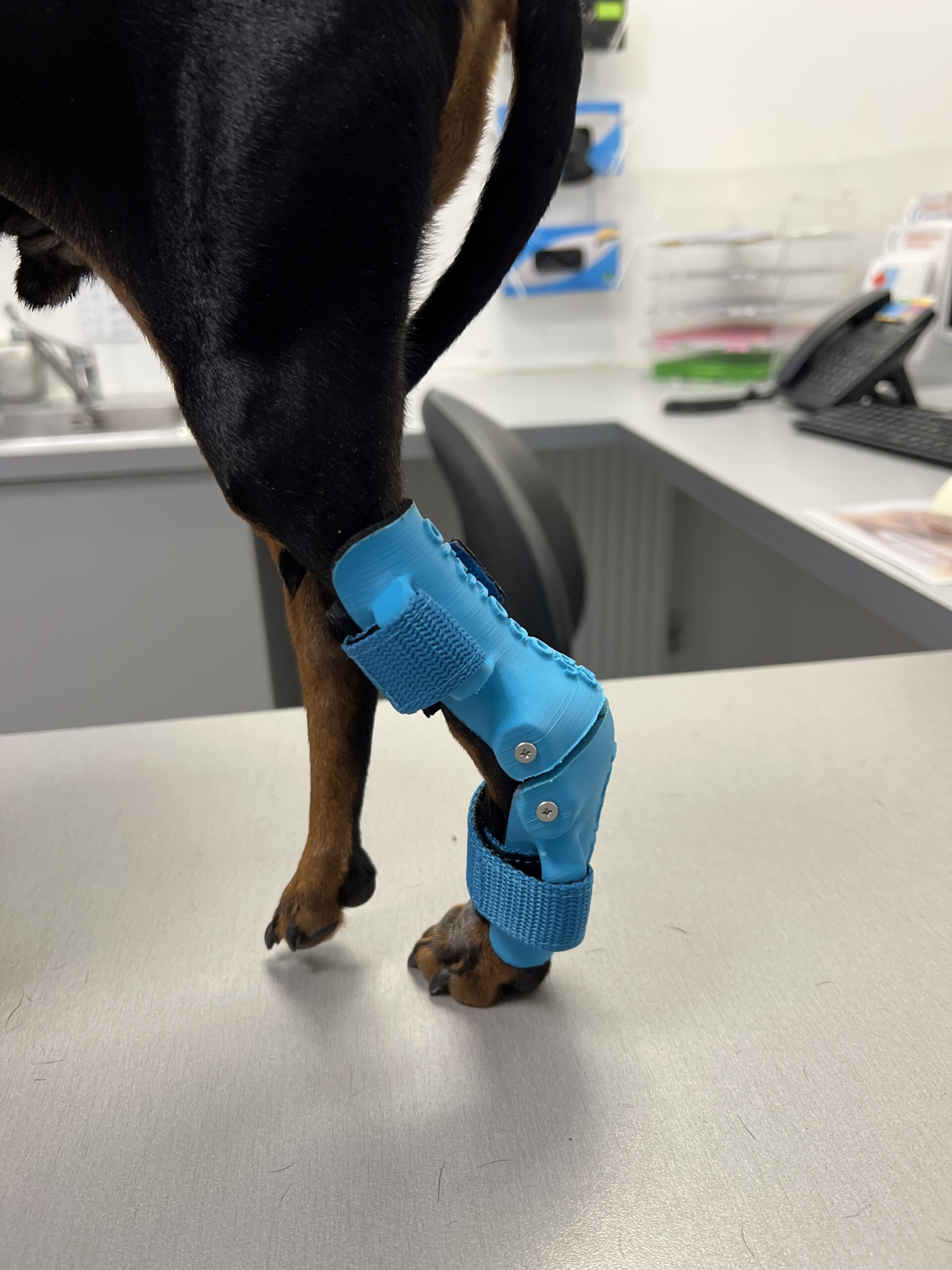3D Printing in Animal Orthopedics: Rocky’s Story
 Meet the story of Rocky. A young pinscher whose life changed 180 degrees after a tragic accident, thanks to the support of people of good will and the possibilities of 3D printing. His case shows how additive technologies support modern orthopedics and give hope for a better life for our animal friends.
Meet the story of Rocky. A young pinscher whose life changed 180 degrees after a tragic accident, thanks to the support of people of good will and the possibilities of 3D printing. His case shows how additive technologies support modern orthopedics and give hope for a better life for our animal friends.
Rocky
In July 2023, a small pinscher named Rocky arrives at the Tri-City Veterinary Clinic in Gdańsk with a serious pelvic fracture. A young dog was hit by a car, resulting in multiple injuries. Its owners were faced with a difficult choice. Originally, they considered euthanizing the dog because his condition was very serious and the treatment was extremely expensive. However, before they made a final decision, they decided to relinquish their rights to Rocky. It was the beginning of a new chapter in the life of this young dog. The first prognosis, however, was pessimistic – Rocky would no longer walk and it is doubtful that he will ever find a new home.
After undergoing complex surgery to fuse the shattered pelvis and rehabilitation, it was time to make orthoses for Rocky. The elements supporting the dog’s mobility were to relieve the burden on his disabled hind limbs and provide him with comfort and a high quality of life. The creation of the orthosis was handled by a Gdansk-based company – Orthodogs. It brings together enthusiasts who specialize in creating orthopedic supplies for animals on a daily basis. The prostheses they have developed and printed are a perfect fit for Rocky.
The materials for the orthoses were provided by the Fiberlogy. The choice fell on two filaments for 3D printing. The orthoses are made of durable polypropylene, using FiberFlex filament for parts that required flexibility. Polypropylene is a popular material that is perfect for making components that require durability while maintaining flexibility. This 3D printing filament is also characterized by its low weight and resistance to chemicals, which makes it an excellent material for creating orthopedic supplies. The additional use of FiberFlex (TPU alike) filament in key areas of the orthosis model ensures maximum comfort.

3D printing – new possibilities for orthopedics
One of the key advantages of 3D printing in orthopedics is the ability to create dedicated solutions, tailored to the anatomical and functional requirements of a specific patient. In the case of prostheses and orthoses, this feature becomes extremely important, allowing the design to be tailored to specific body and movement needs.
In animal orthopedics, where each patient can vary greatly in size, weight and movement style, 3D printing plays a particularly important role. It allows prostheses to be tailored to an animal’s specific anatomy, greatly improving their quality of life.
3D printing eliminates the need for mass production and the limitations associated with it. Traditional manufacturing methods can be costly and time-consuming, especially for customized solutions. 3D printing enables rapid response to specific needs. This is crucial, especially in the case of emergencies or the need for urgent medical intervention. In animal orthopedics, where patients are often awaiting adoption or need quick adjustments to a changing medical condition, this flexibility and low cost is invaluable.
It’s also worth noting that 3D printing allows the use of a variety of materials, depending on your needs. Flexible filaments, durable plastics or even biodegradable substances can be used to produce prostheses and orthoses. Thus, customization to specific patient requirements becomes even more precise.
Better life thanks to 3D printing
Thanks to the efforts of specialists and enthusiasts, Rocky is back on his paws. However, this is just the beginning of his re-learning to walk and enjoy life to the fullest. Despite his difficult past, Rocky found a loving permanent home in early 2024, where he is beginning a new chapter. Once back on four paws thanks to orthoses made using 3D printing, as well as his own strength and determination, Rocky won the hearts of many people, including those who eventually decided to adopt him. His example gives hope for the development of 3D printing in the field of life-changing animal orthopedics.
Rocky’s story shows that advanced technologies like 3D printing not only benefit humans, but are also becoming a key tool in saving and improving the lives of our animal companions. This gives hope for a future where innovative medical solutions will continue to play a central role in ensuring the health and happiness of animals.